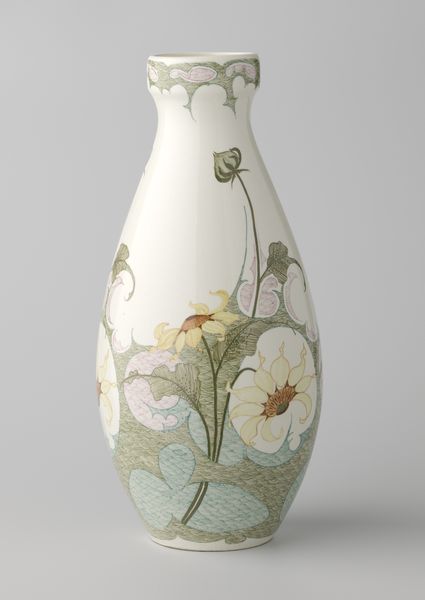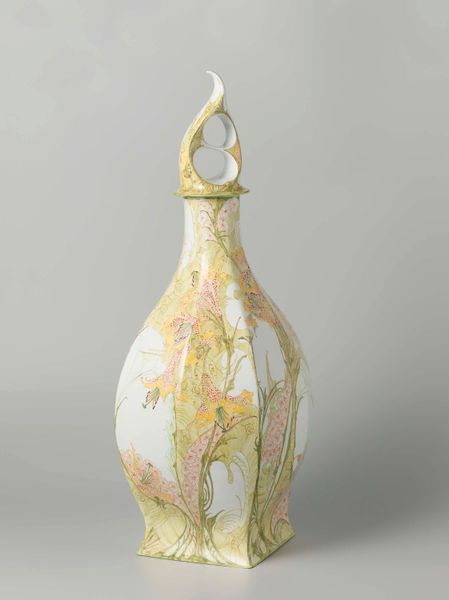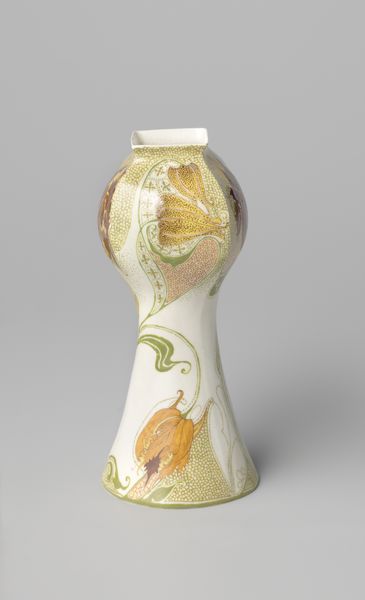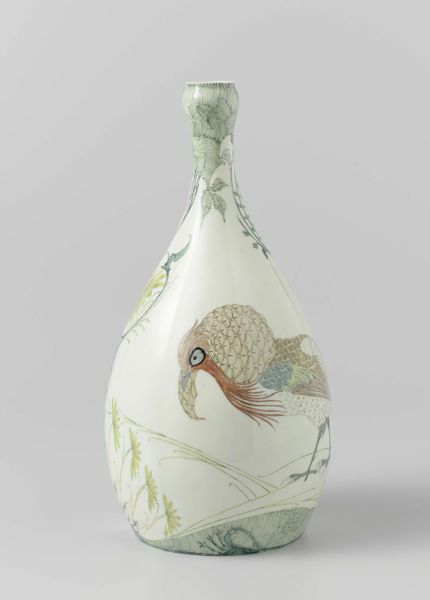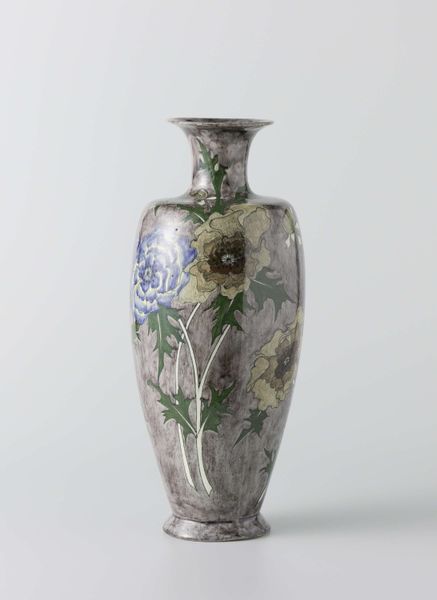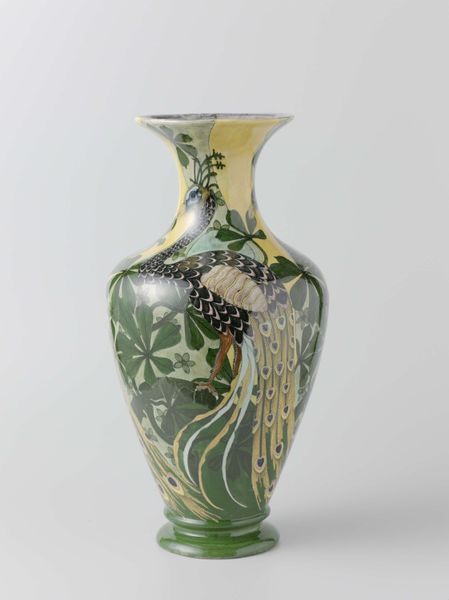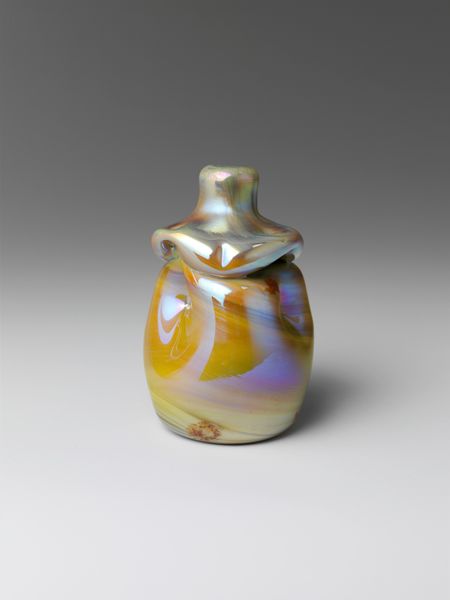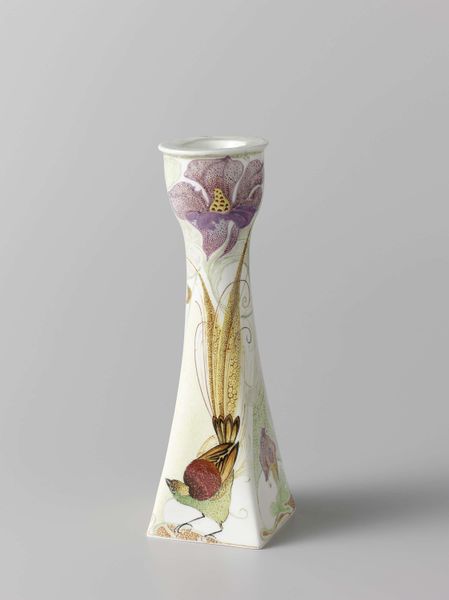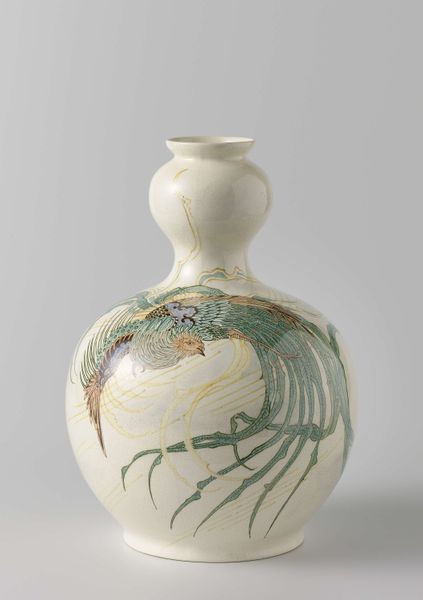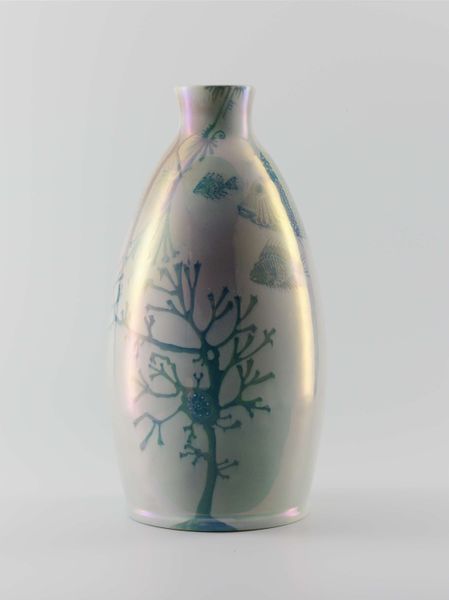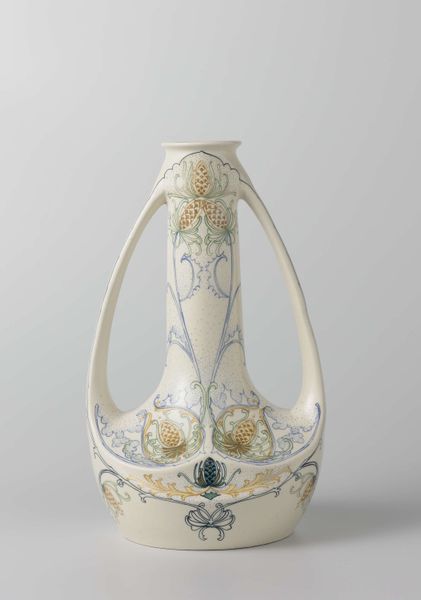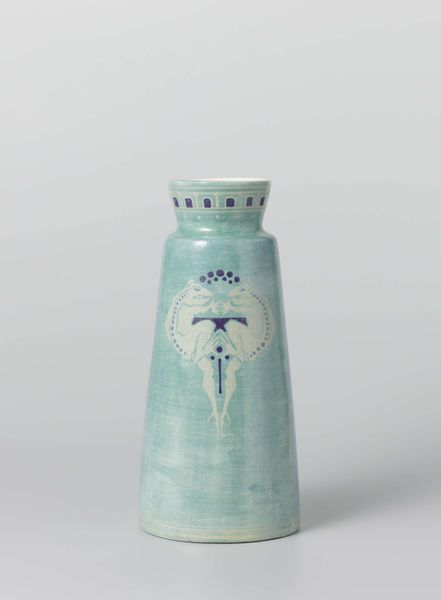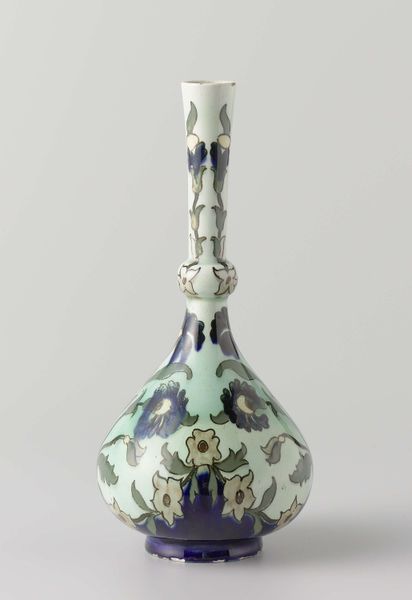
ceramic
#
art-nouveau
#
ceramic
#
ceramic
#
decorative-art
Dimensions: height 14.3 cm, diameter 8.2 cm
Copyright: Rijks Museum: Open Domain
Curator: Welcome. Today, we’re examining a ceramic vase created in 1904 by N.V. Haagsche Plateelfabriek Rozenburg. Its official title translates to “Vase Decorated with Flowers and Parrots." Editor: Immediately, I'm struck by its delicacy. It seems so fragile, almost ephemeral despite being ceramic. The colours are soft, the birds seem weightless. Curator: It's a prime example of Dutch Art Nouveau, a movement deeply intertwined with the socio-economic shifts of the era, like a resurgence of craft amidst increasing industrialization. Luxury ceramics were often vehicles to assert cultural status. Editor: Right. You see this in the careful hand-painting, mimicking detailed engravings—labor intensive production, elevating it above mass produced items. The material itself, while commonplace, is transformed through skillful production. How much would one of these cost? Curator: These Rozenburg pieces were high-end, sought after by elites. Consider it not just decorative art, but a statement—a display of taste and wealth. The imagery also plays a role here. The birds are not local species. Editor: The exotic parrots are a status symbol, I think. And the simplification of natural forms aligns perfectly with Art Nouveau ideals, the graceful lines and botanical elements are stylized yet intricate, suggestive of both organic growth and controlled production. The artists working within this medium weren't just decorators, but active interpreters of global motifs. Curator: Absolutely. The Rozenburg factory, during this period, enjoyed patronage from upper middle class citizens interested in reinforcing symbolic capital and national pride, but as these types of items grew more common, they had to consistently improve the process of creating, sourcing the finest materials to elevate their products from emerging markets. Editor: It’s a fascinating glimpse into a period where craftsmanship and industrial innovation intersected to shape aesthetic trends and reinforce class structures. So much work went into making this relatively straightforward decorative item. I think about all the artists who helped make the piece, and that adds an amazing complexity to my perception. Curator: Indeed. And while it may seem a mere objet d'art, it reflects the wider artistic currents and societal dynamics of its time. Editor: Looking closely like this really helps one appreciate the context around how beautiful objects come into existence, who uses them, and to think about them critically, but appreciate them all the more.
Comments
No comments
Be the first to comment and join the conversation on the ultimate creative platform.
